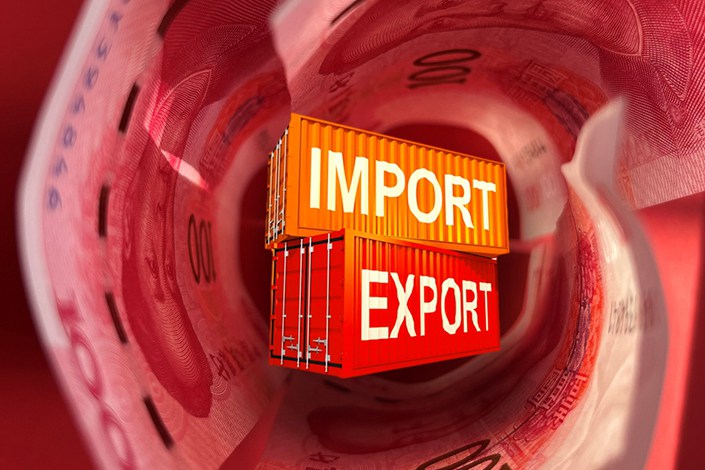
Internationalization of a currency is a long-term process that cannot be achieved overnight. China’s yuan began its move onto the world stage after the 2008 financial crisis, and with years of efforts, its international status has risen significantly.
One of the landmark events was the yuan’s admission into the International Monetary Fund’s (IMF) special drawing rights (SDR) currency basket on Oct. 1, 2016. In the fourth quarter that year, the IMF for the first time included the currency in its official foreign exchange reserves database.
Since then, yuan assets in the IMF-compiled global official forex reserves have soared from around $90 billion to nearly $300 billion the third quarter of 2022, with its share of the total reserves surging from 1.08% to 2.76% — an average annual increase of about 0.3 percentage points.
Currently, more than 80 central banks and monetary authorities hold yuan in their forex reserves. In the fourth quarter of 2018, the currency surpassed the Canadian dollar to take fifth place in the IMF ranking, where it remains today.
The yuan’s share in the IMF-compiled global forex reserves is approaching the Japanese yen and British pound, which are third and fourth respectively behind the euro and U.S. dollar. The greenback still accounts for the bulk of reserves, but since 2016, its portion has fallen from 65.5% to 59.8%. It is worth noting that the shares of almost all other major currencies have ticked up.
Overall, the yuan has shown an upward trajectory over the past 15 years as a global currency for investment, financing, pricing, payments, and reserves.
Read more Yuan Internationalization Grows at the Fastest Pace Since 2018, Index Shows
That said, there’s still a long way to go for yuan internationalization. The currency was on one side of 7% of all trades in over-the-counter forex markets in April 2022, according to data released by the Bank for International Settlements (BIS). Trading of the U.S. dollar and euro accounted for 88.5% and 30.5% respectively on one side of all trades, while the yen and pound were 16.7% and 12.9% respectively.
Meanwhile, the yuan only contributes to 1.9% of global payments, ranking fifth, while the U.S. dollar, euro, pound and yen account for 40.1%, 37.9%, 6.6% and 3.2%, respectively.
Looking forward, there are some favorable conditions for the redback’s internationalization, with more than 1,900 foreign financial institutions now using the currency for settlements with the Chinese mainland and Hong Kong. Also, the People's Bank of China has offered currency swap quotas to around 40 other central banks and developed a reserve pooling scheme with the BIS.
Meanwhile, CME Group, the world’s leading operator of financial dervatives exchanges, is set to launch options on its existing U.S. dollar/offshore yuan futures in April.
The currency has also had a boost from the yuan-denominated cross-border payment system, with 1,366 participants globally last month, while the share of yuan settlements reached nearly 50% in all cross-border transactions with China last year. Around 10 trillion yuan ($1.5 trillion) of yuan-denominated financial assets in China are held by overseas entities.
Another positive sign came last May, when the IMF raised the yuan’s weighting in the SDR basket from 10.92% to 12.28%.
Unlike the pound or U.S. dollar, the euro, yen, and yuan have never been dominant global currencies.
The euro’s current international status is second only to the U.S. dollar, but the currency lacks shared resources and a unified financial market.
The yen’s position as a global currency is weakening, while its economy is almost stagnant. But the currency’s strength lies in its full convertibility and Japan’s free cross-border capital flows.
China intends to internationalize the yuan with policy support, a large unified financial market, stable currency value and increasing exchange rate flexibility at its back. The country hasn’t allowed free cross-border capital flows and its currency hasn’t become fully convertible, but conditions are improving. Given time, the yuan has the potential to become a more significant global currency.
Gao Zhanjun is a senior research fellow at the National Institution for Finance and Development.
This article has been edited for length and clarity.
Contact translator Zhang Ziyu (ziyuzhang@caixin.com) and editor Jonathan Breen (jonathanbreen@caixin.com)
Get our weekly free Must-Read newsletter.







